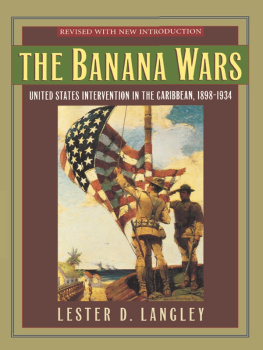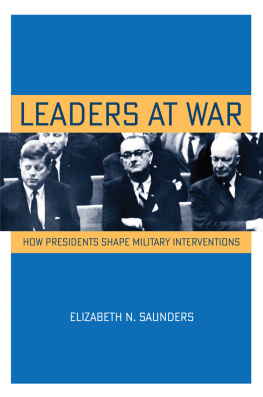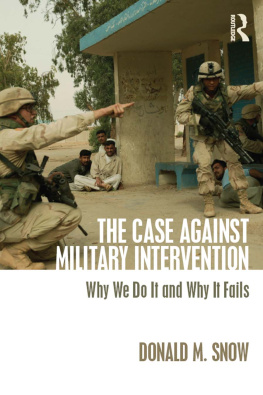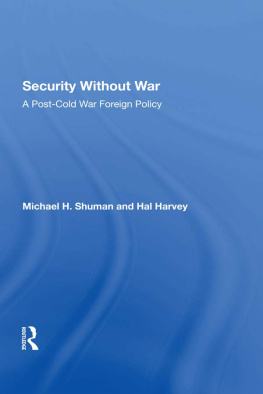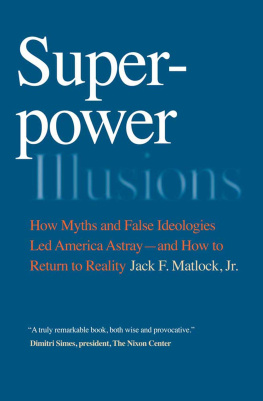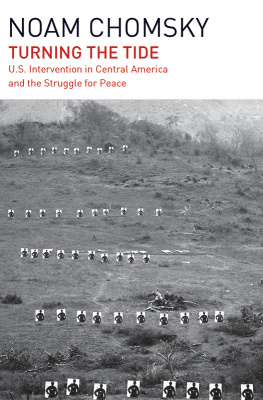PRAISE FOR
U.S. MILITARY INTERVENTION IN THE POSTCOLD WAR ERA
Especially useful because of its informative contemporary case studies, Glenn Antizzos book will be an indispensable guide as American policymakers consider military interventions in the years ahead.
W. DAVID CLINTON
editor of The Realist Tradition and Contemporary International Relations
This book presents a most interesting and thought-provoking perspective from political scientist Glenn Antizzo on U.S. military intervention strategies since the Cold War. Antizzo analyzes previous interventions as case studies and raises the What if? questions, using the identified factors and preconditions to establish a framework for application to todays military intervention strategies. A must-read for anyone interested in developing and applying military strategy for the long haul.
MAJOR GENERAL HUNT DOWNER
Assistant Adjutant General of the Louisiana National Guard
Antizzo lays out a clear set of principles, which, if adhered to, would both decrease the number of U.S. interventions abroad and increase their possibility of meeting successful ends. His argument about the conditions under which an intervention ought to be launched merits consideration by anyone who advocates an adventurous foreign policy.
RICK TRAVIS
contributor, After the End: Making U.S. Foreign Policy in the Post-Cold War World
In this readily accessible study, political scientist Glenn J. Antizzo identifies fifteen factors critical to the success of contemporary U.S. military intervention and evaluates the likely efficacy of direct U.S. military involvement todaywhen it will work, when it will not, and how to undertake such action in a manner that will bring rapid victory at an acceptable political cost. He lays out the preconditions that portend success, among them a clear and attainable goal; a mission that is neither for peacekeeping nor for humanitarian aid within a war zone; a strong probability the American public will support or at least be indifferent to the effort; a willingness to utilize ground forces if necessary; an operation limited in geographic scope; and a theater commander permitted discretion in the course of the operation.
Antizzo then tests his abstract criteria by using real-world case studies of the most recent fully completed U.S. military interventionsin Panama in 1989, Iraq in 1991, Somalia in 1992-94, and Kosovo in 1999with Panama, Iraq, and Kosovo representing generally successful interventions and Somalia an unsuccessful one. Finally, he considers how the development of a Somalia Syndrome affected U.S. foreign policy and how the politics and practice of military intervention have continued to evolve since the terrorist attacks of September 11, 2001, giving specific attention to the current war in Afghanistan and the larger War on Terror.
U.S. Military Intervention in the Post-Cold War Era exemplifies political science at its best: the positing of a hypothetical model followed by a close examination of relevant cases in an effort to provide meaningful insights for future American international policy.
Glenn J. Antizzo is coauthor of Charting a New Diplomatic Course: Alternative Approaches to Americas Post-Cold War Foreign Policy and Congress and the Foreign Policy Process: Modes of Legislative Behavior. He is an associate professor of government at Nicholls State University, in Thibodaux, Louisiana.
U.S. MILITARY INTERVENTION IN THE POST-COLD WAR ERA
POLITICAL TRADITIONS IN FOREIGN POLICY SERIES
Kenneth W. Thompson, Series Editor
U.S. MILITARY INTERVENTION IN THE POST-COLD WAR ERA
HOW TO WIN AMERICAS WARS IN THE TWENTY-FIRST CENTURY
GLENN J. ANTIZZO
PUBLISHED BY LOUISIANA STATE UNIVERSITY PRESS
Copyright 2010 by Louisiana State University Press
All rights reserved
Manufactured in the United States of America
First printing
DESIGNER : Michelle A. Neustrom
TYPEFACE : Chaparral Pro
PRINTER AND BINDER : Thomson-Shore, Inc.
LIBRARY OF CONGRESS CATALOGING-IN-PUBLICATION DATA
Antizzo, Glenn J.
U.S. military intervention in the post-Cold War era: how to win Americas wars in the twenty-first century / Glenn J. Antizzo.
p. cm. (Political traditions in foreign policy series)
Includes bibliographical references and index.
ISBN 978-0-8071-3642-3 (cloth: alk. paper) 1. United StatesMilitary policy20th century. 2. United StatesMilitary policy21st century. 3. Intervention (International law) History20th century. 4. Intervention (International law)History21st century. 5. United StatesForeign relations1989- I. Title.
UA23.A836 2010
355.033573dc22
2009048383
The paper in this book meets the guidelines for permanence and durability of the Committee on Production Guidelines for Book Longevity of the Council on Library Resources.

DEDICATED TO THE MEMORIES OF
Joseph D. Antizzo
Imogene Lawrence
Dr. Cecil V. Crabb Jr.
ACKNOWLEDGMENTS
There are so many people who helped make this book possible, and I would like to give them the credit they deserve.
First is my mentor, the late Dr. Cecil V. Crabb Jr. His wisdom and sage advice are evident throughout this work. I am especially indebted to him for his role in developing the structure of the book that follows.
With heartfelt gratitude, I want to acknowledge the support of my mother, Jeanne Judge. For nearly a decade, she has acted as my editor, critic, and sounding board.
Thanks are also due to Stacey Allemand, who for years has served as my informal research assistant and confidant.
In addition, I am deeply indebted to Anita Tully and David Middleton, both professors of English at Nicholls State University. Their help with improving the technical aspects of certain passages has greatly improved this books flow and readability.
Many other people, too numerous to name here, supported me throughout this process. Their love and encouragement sustained me and challenged me to produce my very best work.
Finally, as a Christian, I want to thank my Lord and Savior, Jesus Christ.
U.S. MILITARY INTERVENTION IN THE
POST-COLD WAR ERA
INTRODUCTION
As Cecil V. Crabb Jr. points out in his book The Doctrines of American Foreign Policy, the doctrines that have guided U.S. foreign policy are not static. Rather, despite recurring themes, such as anti-communism, they are pragmatically adjusted on a need basis. That is to say that they evolve, adapting to circumstances as the international environment and changing perceptions of national interests dictate. Bearing this in mind, it would seem that American foreign policy has undergone a gradual, yet discernable, evolution since the end of World War II.
Like nothing before it, the Japanese attack on Pearl Harbor in 1941 forced Americans to face the fact that, whether they liked it or not, U.S. security requirements absolutely compelled defense of the nations interests abroad. This became even clearer when, shortly after the allied victory, the Soviet Union began to indicate that it would be neither an ally nor even a friend to the United States.



